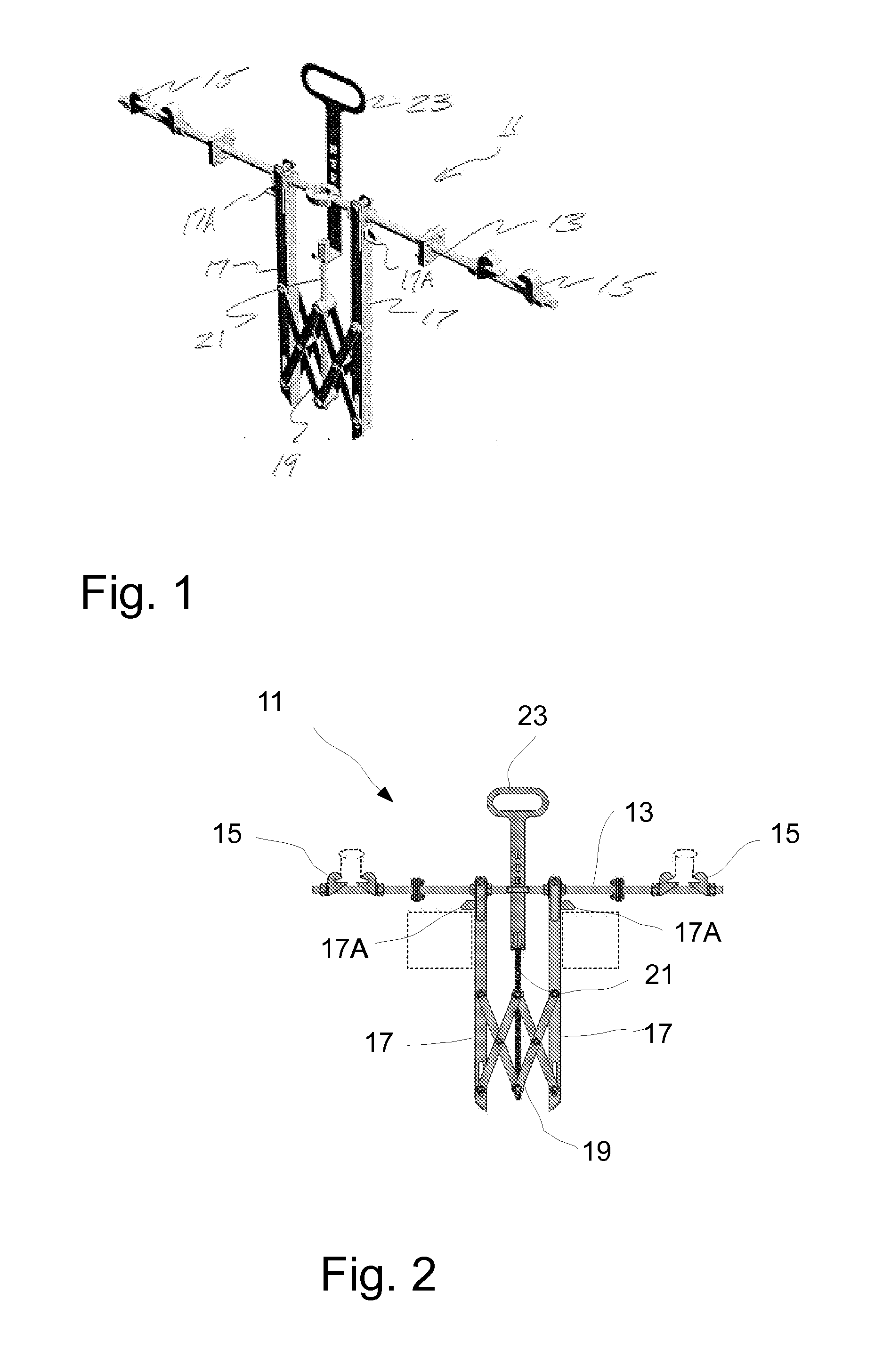Rail stabilizer for rail tie replacement
- Summary
- Abstract
- Description
- Claims
- Application Information
AI Technical Summary
Benefits of technology
Problems solved by technology
Method used
Image
Examples
Embodiment Construction
[0013]Referring now to the Figures and particularly to FIGS. 1 and 2, the rail tie stabilizer 11 according to the present invention will be described. Stabilizer 11 comprises a gage rod 13, which may be a length selected to correspond to the “gage” or width between rails. A pair of rail clamps 15 may be secured by threads and nuts on each end of gage rod 13. Rail clamps 15 are configured to securely and rigidly attach to railroad rails so that, in cooperation with gage rod 13, the rails are maintained spaced apart by the selected gage of the rail track. Rail clamps 15 may be electrically insulated to prevent interference with signals conducted by track.
[0014]A pair of shoes 17 may be slidably mounted at their upper ends to gage rod 13. Shoes 17 are movable along the length of gage rod 13 between expanded and collapsed positions and may be mounted to rod 13 using linear bearings and clevis pins for smooth operation and easy disassembly. A scissor mechanism 19 may be arranged between ...
PUM
 Login to View More
Login to View More Abstract
Description
Claims
Application Information
 Login to View More
Login to View More - R&D Engineer
- R&D Manager
- IP Professional
- Industry Leading Data Capabilities
- Powerful AI technology
- Patent DNA Extraction
Browse by: Latest US Patents, China's latest patents, Technical Efficacy Thesaurus, Application Domain, Technology Topic, Popular Technical Reports.
© 2024 PatSnap. All rights reserved.Legal|Privacy policy|Modern Slavery Act Transparency Statement|Sitemap|About US| Contact US: help@patsnap.com









